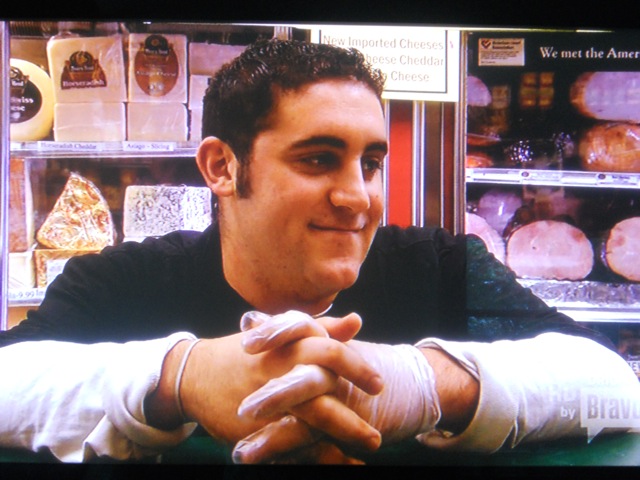Ready-to-eat (RTE) meat and poultry products manufactured with natural or organic methods are at greater risk for Listeria monocytogenes growth, if contaminated, than their conventional counterparts due to the required absence of preservatives and antimicrobials. Thus, the objective of this study was to investigate the use of commercially available natural antimicrobials and post-lethality interventions in the control of L. monocytogenes growth and recovery on a RTE ham product.
 Antimicrobials evaluated were cranberry powder (90MX), vinegar (DV), and vinegar/lemon juice concentrate (LV1X). Post-lethality interventions studied were high hydrostatic pressure at 400 (HHP400) or 600 (HHP600) MPa, lauric arginate (LAE), octanoic acid (OA), and post-packaging thermal treatment (PPTT). Parameters evaluated through 98 days of storage at 4±1°C were residual nitrite concentrations, pH, aw, and viable L. monocytogenes on modified Oxford (MOX) media. On day 1, OA, 90MX, DV, and LV1X yielded lower residual nitrite concentrations than the control, whereas HHP400, HHP600, and LAE did not. LAE, HHP400, and OA reduced L. monocytogenes population compared to the control after 1 day of storage by 2.38, 2.21, and 1.73 log10 colony-forming units per gram, respectively. PPTT did not achieve a significant reduction in L. monocytogenes populations. L. monocytogenes recovered and grew in all post-lethality intervention treatments except HHP600. 90MX did not inhibit the growth of L. monocytogenes, while DV and LV1X did.
Antimicrobials evaluated were cranberry powder (90MX), vinegar (DV), and vinegar/lemon juice concentrate (LV1X). Post-lethality interventions studied were high hydrostatic pressure at 400 (HHP400) or 600 (HHP600) MPa, lauric arginate (LAE), octanoic acid (OA), and post-packaging thermal treatment (PPTT). Parameters evaluated through 98 days of storage at 4±1°C were residual nitrite concentrations, pH, aw, and viable L. monocytogenes on modified Oxford (MOX) media. On day 1, OA, 90MX, DV, and LV1X yielded lower residual nitrite concentrations than the control, whereas HHP400, HHP600, and LAE did not. LAE, HHP400, and OA reduced L. monocytogenes population compared to the control after 1 day of storage by 2.38, 2.21, and 1.73 log10 colony-forming units per gram, respectively. PPTT did not achieve a significant reduction in L. monocytogenes populations. L. monocytogenes recovered and grew in all post-lethality intervention treatments except HHP600. 90MX did not inhibit the growth of L. monocytogenes, while DV and LV1X did.
Results of this study demonstrate the bactericidal properties of HHP, OA, and LAE and the bacteriostatic potential of natural antimicrobial ingredients such as DV and LV1X against L. monocytogenes.
Lavieri Nicolas A., Sebranek Joseph G., Brehm-Stecher Byron F., Cordray Joseph C., Dickson James S., Horsch Ashley M., Jung Stephanie, Larson Elaine M., Manu David K., and Mendonça Aubrey F.
Foodborne Pathogens and Disease. June 2014, 11(6): 462-467.




(1)(2).jpg) bugs such as E. coli, salmonella and listeria. And here’s the rub: “It’s probably not the foods you think that will make you sick,” Powell says.
bugs such as E. coli, salmonella and listeria. And here’s the rub: “It’s probably not the foods you think that will make you sick,” Powell says. Caroline’s family went to visit their daughter Lauren’s boyfriend’s family at their Italian food store, Little Italy Deli. One of the men behind the counter handed Caroline a bowl of soup with a gloved hand, and then Marco (or Vito Jr’s brother) struck this pose (right, exactly as pictured). What’s the point of wearing sanitary gloves if you’re going to rub them on your unprotected hand? Apparently there is some cultural confusion about whom the gloves protect, the food handler or the client. In food safety language this is referred to as magic glove syndrome.
Caroline’s family went to visit their daughter Lauren’s boyfriend’s family at their Italian food store, Little Italy Deli. One of the men behind the counter handed Caroline a bowl of soup with a gloved hand, and then Marco (or Vito Jr’s brother) struck this pose (right, exactly as pictured). What’s the point of wearing sanitary gloves if you’re going to rub them on your unprotected hand? Apparently there is some cultural confusion about whom the gloves protect, the food handler or the client. In food safety language this is referred to as magic glove syndrome. that are not properly cleaned and sanitized.
that are not properly cleaned and sanitized. at the store between December 30, 2010 and January 4, 2011, or consumed meat or cheese sliced at the deli counter from January 5 to January 10, 2011 should receive hepatitis A vaccine as a precaution. Individuals who ate or purchased deli items after this time period are not at risk of contracting the disease.
at the store between December 30, 2010 and January 4, 2011, or consumed meat or cheese sliced at the deli counter from January 5 to January 10, 2011 should receive hepatitis A vaccine as a precaution. Individuals who ate or purchased deli items after this time period are not at risk of contracting the disease..jpg) interests?
interests?(1).jpg) Avoiding eating these products is especially important for Canadians at high risk of getting seriously ill from food-borne (sic, other agencies spell it foodborne) illness:
Avoiding eating these products is especially important for Canadians at high risk of getting seriously ill from food-borne (sic, other agencies spell it foodborne) illness: